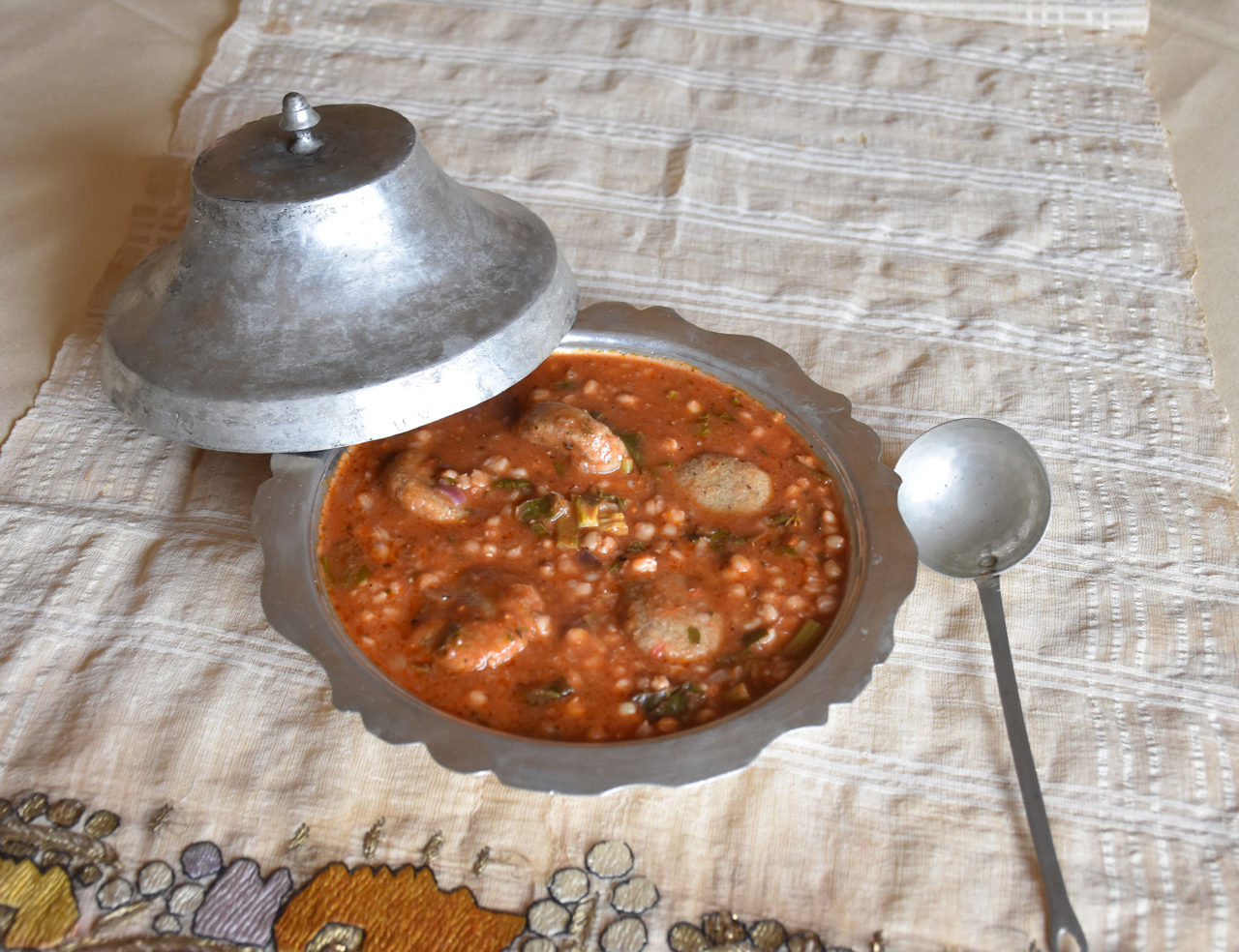With an abundance and diversity of vegetables, fruit and fresh herbs, combined with a variety of meat and dairy products, Diyarbakır has been a city of great cuisine throughout history. One must also seek traces of cultural and religious variety in the roots of food culture. Educator and food writer Filiz Parlak writes here about the cuisine traditions of Diyarbakır and its environs. Writer Silva Özyerli focuses on the common cuisine of Armenians, Assyrians and Chaldeans. Both writers have provided a recipe each for this exhibition. The section ends with a wide selection from the Dictionary of Diyarbakır Culinary Terms.
Diyarbakır is located in the middle of agricultural centres like Karacadağ and the Hevsel Gardens, and its cuisine has a history of tens of millennia. Traditional Diyarbakır cuisine was shaped by, and diversified within a triangle of dry-land agriculture, animal husbandry and viticulture. Knowledge of and recipes from this cuisine that includes Diyarbakır and its environs belong essentially to the last three centuries. Wheat, lentils, honeydew melon, watermelon, grapes, mulberries and courgettes are products we come across most in these recipes. In addition to vegetables and fruit, herbs also hold a special place in Diyarbakır cuisine. Meftune, dolma, kibe mumbar, kelle paça [sheep’s head and foot], hevrişk (sweet bread halva), sirav (tirit, or boiled mince meat sauce with garlic), şilike/nane şilê (stone oven bread), savar (bulgur pilaf) varieties, keşkek, habenisk (lentil soup), kibekudur (a bulgur dish with mint), cheese varieties, pickles, tarhana [sundried curd, tomato and flour], şehriye kesmeleri [traditional pasta/noodles], içli köfte [stuffed meatballs] and çöreks have been prepared in nearly the same way for centuries.
Wheat is abundant in the region, and it is used as a staple in various varieties such as flour, cracked wheat and bulgur. Especially because of its nutritional value, preservation duration and ease of cooking, bulgur and products made of bulgur have been widely used during every period. The relationship with flour is restricted to breads and certain böreks. Cracked wheat is preferred because it cooks faster, its texture and taste. Cracked bulgur is also used in many dishes and desserts.
In the region bread (nan) is considered a blessing, it is kissed and raised to the forehead out of respect, and is sworn on. Depending on the type of dough, it is cooked leavened or unleavened, and in the types known as lavaş, açık [open], helat (also bazlama, or flat-baked), patile (also gözleme, similar to a savoury pancake), katmer, çaqıl and yufka [pastry dough]. There are also different methods of baking bread such as sac [on an iron sheet], tandır [an oven, or tandoor, in the earth], or taş ekmeği [stone oven bread]. Dough made for bread is also used in preparing patile with torak [the type of cottage cheese also known as çökelek], cheese, kavurma [braised lamb] or fresh herbs. In this way the tandır or stove lit to make bread is used more efficiently. In Diyarbakır cuisine, waste is frowned upon. For instance, if an aubergine is cored to make dolma, its inside becomes another dish, “çırtma”. The heads of aubergines are dried to make meftune, and named poçikli meftune [meftune with a tail].
Filiz Parlak, Educator, Writer
Due to its ecological composition, there are vineyards all around Diyarbakır. The 69 local types of grapes¹ that are grown here arrive in the kitchen after being processed with different production methods. The season for fresh grape consumption is short, and therefore different means of preserving grapes have been developed. Wine, vinegar, molasses (dims), pulp (bastık), kesme, churchkhela with walnuts (cevizli sucuk), village halva (helavi) and raisins can be consumed alone, and also, tens of different kinds of dishes and desserts are made using them.
Since sheep and goat farming is more widespread, milk and dairy products are consumed as much as meat and offal. Many dairy products are produced in the region including cheese, yoghurt, butter, çökelek or torak (cottage cheese), kurut (qurut, dried cottage cheese), tenire (dried yoghurt), dew (skimmed ayran), tomast (a mixture of strained yoghurt, torak and butter) and others.
Vegetables are used fresh in meat dishes with fresh herbs, and they are also fried, braised or charred, or cooked with eggs. They are also dried and pickled. Fruit is often consumed fresh in season. Fruit is also dried, hoşaf, or compotes are prepared, and fruit is often used in desserts. There are also dishes where fruit is used with vegetables.
Filiz Parlak
¹ Karataş, H., Değirmenci Karataş, D. and Özdemir, G. (2017) “Diyarbakır İli Yerel Üzüm Çeşitleri Varlığı ve Değerlendirme Olanağı [Diyarbakır Province Local Grape Types and Means of Use]”, Uluslararası Diyarbakır Sempozyumu [International Diyarbakır Symposiım], Vol. 3, (ed.) Ufuk Bircan, Aytaç Coşkun, Pınar Gürhan Kılıç and Mustafa Temel, Diyarbakır Valiliği Kültür Sanat Yayınları [Diyarbakır Governorate Culture and Art Publications], Diyarbakır: 2095-2104.
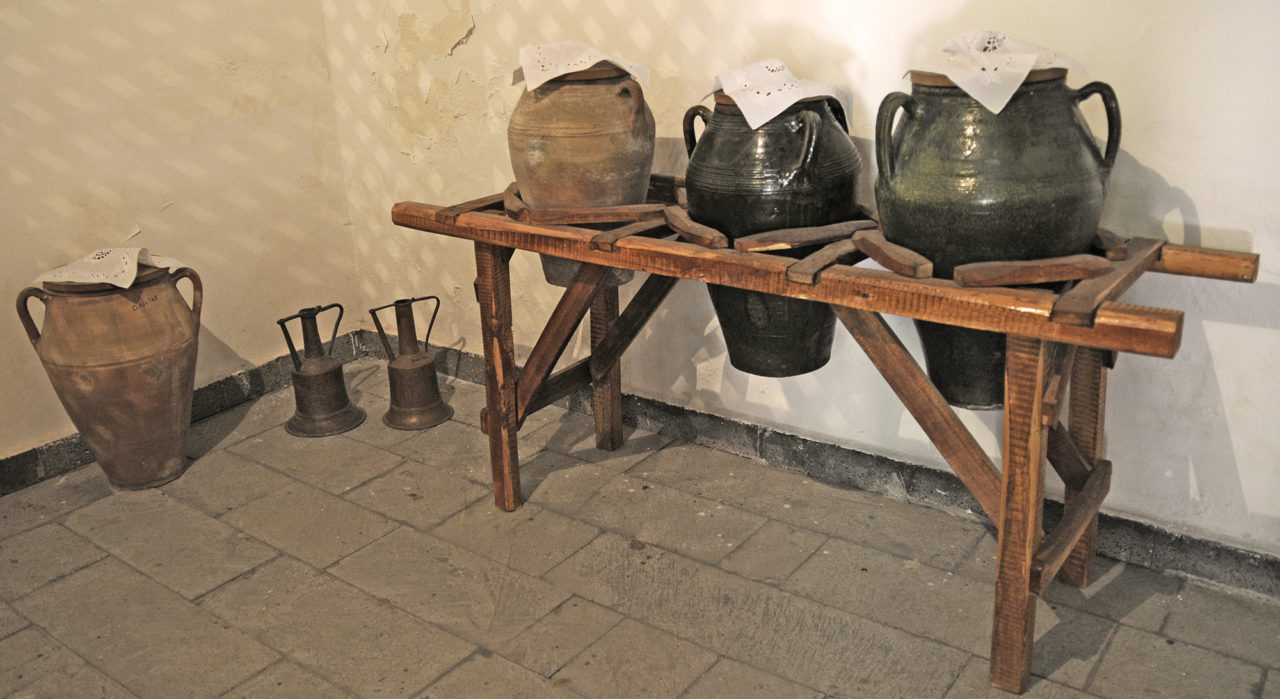
In stone houses, kitchens had no door. Inside, there was always a stove that resembled a great fireplace where a few separate dishes could be cooked at the same time. In addition to the section where the iron sheet to cook bread was placed, there were also a few other sections, large and small, for pots and pans; and variety of use in the kitchen was also a sign of wealth.
In traditional Diyarbakır cuisine, care was taken not only for ingredients, but also cooking and presentation utensils. First and foremost among them are the pilaf pan, the karnıyarık (a dish of whole split aubergines with mince meat filling) pan, üsküre (standing copper bowl), different sized lengeri for presentation (broad and shallow service plates), sini (round metal trays), lunch boxes and teşt (dough bowls)… Certain tools and utensils that were not used often would be shared among neighbours, and they included saltaşı, the stone on which stone-bread was baked, destar (stone handmill), dibek (stone mortars), cauldrons, nıkra (large copper cauldrons), badya (deep copper water cauldrons), large colanders and sieves.
The pantry, with a door from the kitchen, or an entry close to the kitchen, and named jêrzemîn (below the ground) because it was often below the ground floor, held a highly significant part in Diyarbakır cuisine. Earthenware jars containing clarified butter, flour, braised meat, molasses, pulp and tomato paste, placed on wooden mahvel (shelves) would occupy the most prominent corner of the pantry. The jars would be varnished with the green glaze known as “Diyarbakır green”, would be fastened with wooden lids with handles and covered with white clothes embroidered with cross-stitch patterns. Over time, these earthenware jars were replaced by white zinc/enamel buckets, and round copper trays. The finely tressed large baskets that were used as food covers to stop it from spoiling and from insects were also replaced by cupboards. During summer months of extreme heat, the evening’s cool air would protect the food, yet leftovers would be eaten in the morning at breakfast, before they went bad, thus making best use of all food. This practice, in time, turned into a habit, and then into a tradition.
In Diyarbakır architecture, the pantry and kitchen are often located in the northern part of the home. Chimneys opening onto the roof and small windows provide natural ventilation. The cleanliness of the pantry is of utmost importance, so in spring the whole pantry is maintained and every nook and cranny is cleaned. Dry onions that must be consumed immediately are used in making içli köfte (stuffed meatballs), and cereals that are running low are combined to make soups and other dishes.
Filiz Parlak
Every woman has a unique way of chopping onions. Onions are often chopped without using a chopping board, diced, fine and indented and the same goes for parsley.
Cleanliness is considered very important, and is reflected both in cooking and presentation. Meat, especially poultry, offal and game is washed well, pre-boiled, and its water is drained away. The cream of yoghurt bought in copper sıtıl (buckets) is placed on the table after it is washed and drained.
Diyarbakır cuisine is dominated by sour, fatty, meat-dishes. Varieties of bulgur, vegetables and fresh herbs meet mostly with meat and eggs to create dishes with high nutritional value. Fat is of utmost importance for taste. Tail fat is among the oldest known and used fat types. Clarified butter also retains its place in contemporary cuisine because it provides texture, taste, softness and shine to dishes.
The mixed cooking of wheat and legumes, and the addition of a lot of vegetables, and first of all, onions, are of utmost importance. Pastes of sun-dried peppers and tomatoes and spices add further taste to dishes. Parsley is so important that if there is none, dishes such as dolma (stuffed vegetables) and içli köfte (stuffed meatballs) are simply not made. In the past, parsley was also among herbs dried to be used in the winter. Spring is looked forward to with great expectation to use herbs fresh. Kenger (a type of thistle) takes its place on market stands in March and April. Fresh cheese is made with the onset of spring. Vegetable dishes begin mostly in May and June. Legumes and offal dishes aren’t made much in the summer. Summer dishes are often stews, and sumac is the spice of preference. A pilaf made of Karacadağ rice or bulgur is a must side dish.
Filiz Parlak
The cooked food is transferred onto trays and large dishes by turning over and piling up: First comes, as tradition requires, the appeasement of the eye and the heart. Dishes for special days, and winter preparations are made by imece, in other words, with voluntary collective work, and in this way, become more fun. Condolence, feast, wedding dinners, and dinners on mevlit events (memorial services), teething celebrations, henna nights, serê salê (New Year) and banquets are all important occasions in Diyarbakır cuisine. The cooking is mostly done by the women. The service, on the other hand, is done by the men since there are male guests also. On such days, favourite dishes include braised meat, chicken and turkey, ribs, eşkene (meat broth), roast, pilaf (rice, bulgur, duvaklı [pilaf with a mince meat base]), meftune with courgettes or aubergines, tırşık (stew), dolma and sarma (stuffed vegetables), su böreği (a pastry dish with cheese filling), Diyarbakır çöreği, and at feasts, desserts such as sargıburma (a type of baklava), cendere, sütlü nuriye, various halva, zerde (a saffron and rice dessert) and hoşaf (compote). A dinner table is deemed lacking without honeydew melon, watermelon, grapes, salad and ayran.
Since we are a society that loves music and entertainment, folk songs, traditional songs and ballads are sang when people gather at occasions other than weddings as well. Plenty is made of both savoury and sweet dishes at weddings, mevlit and condolence ceremonies, in order to share with neighbours. “Separate are the place of hunger and the place of pain” is a phrase expressing the importance of cooking at condolence services. On feast evenings, on the other hand, it is with sweet commotion that çörek [pastry buns] and desserts are prepared, and the smell of mahleb spreads from bakeries in the neighbourhood and homes where çörek is being baked. Feast dishes are cooked after midnight so they are fresh the next day. On the morning of the feast, the main course is had at breakfast, and neighbours are invited to dinner after the mosque visit. Sharing and imece [voluntary, collective work] hold an important place in Diyarbakır cuisine.
Filiz Parlak
Fava Bean Meftune
Ingredients:
750 gr. lamb chops
500 gr fava beans
1-2 chilli peppers
1 tablespoon tomato paste
1 tea glass ground sumac
2 tbsp purified butter or 1 tea glass vegetable oil
red pepper flakes
salt
2-3 garlic cloves
Directions:
Place the ground sumac in a bowl with two glasses of water and soak. Add salt, tomato paste and a little sumac water to the meat, and mix. Place the oil in a saucepan and heat, add the meat and braise.
Shelled and chop the fava bean, then also chop the chilli peppers and add them to the pan. Stir, and then add the remaining sumac water. Add five glasses of water and check for salt. Add red pepper flakes. Serve with crushed garlic.
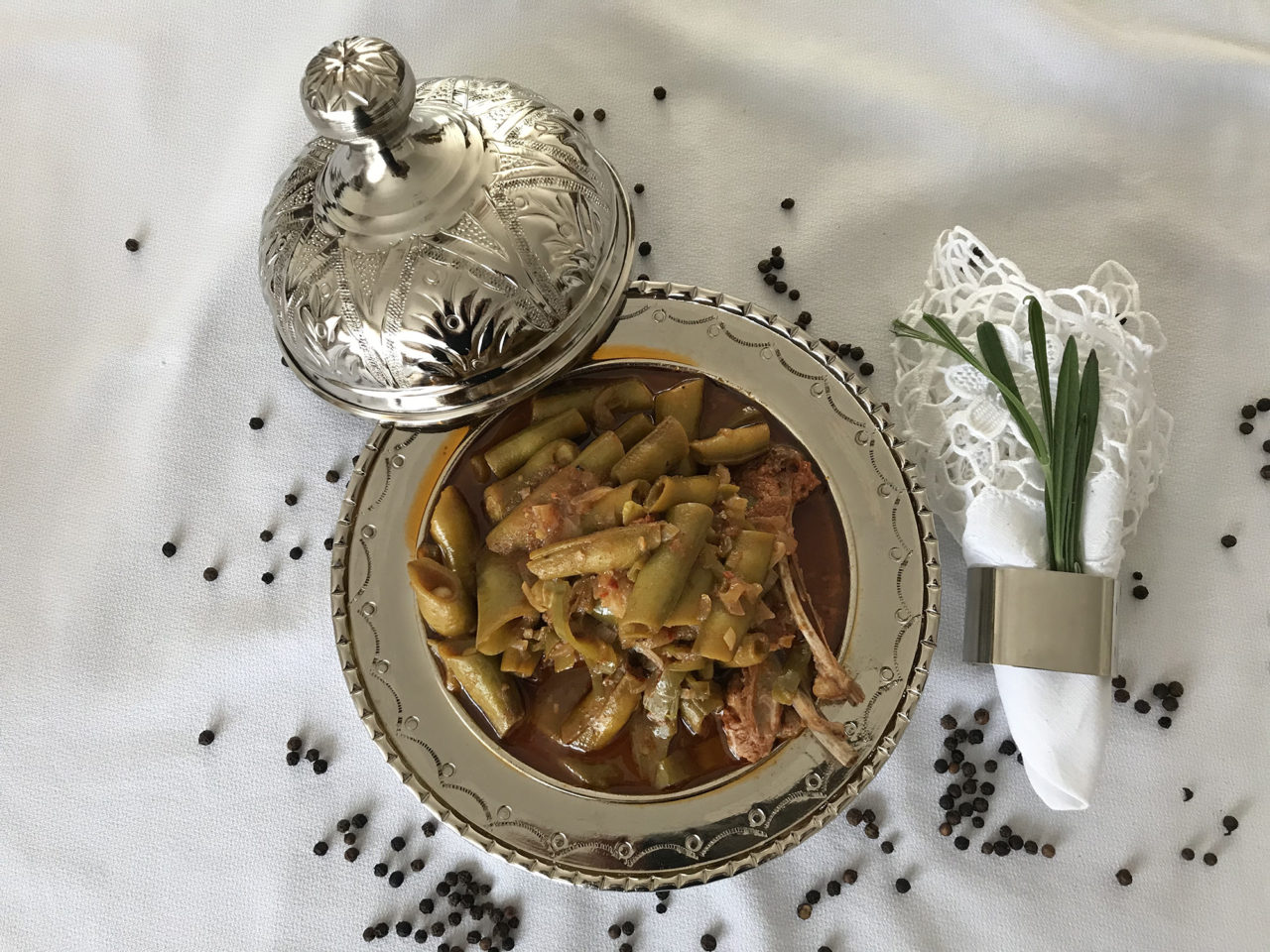
Known by many names throughout history, Amid, Amida, Dikranagerd, Diyarbekir, Amed, Diyarbakır, the cuisine and gastronomy of this city with a history of many millennia is also ancient, and rich. This is a reflection in the city’s cuisine of Turks, Kurds, Armenians, Assyrians, Greeks and Jews; and many different religions and denominations living together, and a cultural diversity that has been distilled over centuries. Cuisine is never just cuisine; and a dish is never just a dish. Each and every dish contains life, bitter and sweet memories, roots, emotions, fragrances, and the spirit of time and space. Cuisine and its culture continue to live in the lands where they are born, along with those who keep them alive, where they exist.
I believe that cuisine has no nationality, it has a land. Whatever the land we live on presents to us, that is what we shape our cuisine and gastronomy with. Of course, peoples living on the same lands do have their own cultures. Religion determines this. As a Diyarbakır Armenian, I can speak of a common cuisine culture of Armenians, Assyrians and Chaldeans, because it is impossible to deny the impact of our religion on our cuisine, from the cradle to the grave.
The feasts of “Dzununt” (Christmas) and “Zadig” (Easter) were periods of time when no animal products entered our kitchen in line with religious rules, or in other words, the time when we observed “dzom, bahk”, or fasted. Especially before the Easter Feast that lasted seven weeks, all the copper pans in the kitchen would be taken to the tinsmith, and every single item used in the kitchen would be rubbed with wood ash to be cleaned, because all our kitchen tools in which we cooked plain butter and meat throughout the year had to be prepared for this. During these special days when we implemented a vegan diet, we would add flavour to our dishes with olive oil and plenty of onions.
Frantic activity would begin in kitchens when preparation time came for the Christmas and Easter, which would follow the feasts. For the eve of both days, “tanabur” (ayran soup) was always cooked. For every feast, feast çörek baked with purified butter and plenty of spices, paluze (jelly made from fermented grape juice or molasses), hasse (a treat made from unsalted roasted chickpeas) and lebzunya (almond paste) would be prepared. Fragrant violet and rose sherbet, liqueurs, “dzağgi çur”, or to use its Assyrian name, “şurubıl harir”, in other words a syrup sweetened with flower juice and served with shelled almonds were also prepared. Painted Easter eggs and stuffed lamb ribs were absolute musts for Easter.
Silva Özyerli, Writer
We, Diyarbakır Christians, do not only prepare çörek at feasts. Assyrians and Chaldeans for engagement ceremonies, and Armenians, to hand out to guests after the religious engagement ceremony held on Sunday at church, would knead large amounts of wedding çörek to serve with örüklü (kneaded) cheese and cinnamon tea. Flour, the main ingredient of the çörek, symbolizes abundance and profusion, and the many types of spices the çörek contains, symbolize the bitter and sweet conditions of life.
A unique tradition of Diyarbakır is kaygana, a special dish made for women who have given birth, known as “dıbsov debeg” in Armenian, and “sıfire” in Assyrian. There are also dishes known as “dğadzkıni pağniki halva” (halva served at the ritual washing of the woman who has given birth at the hamam, or public bath) and “aluri caş” (flour food) freshly cooked and served warm to everyone who comes to congratulate the mother after birth.
Like birth, like weddings, death, too, is for us humans. When the dead meet the earth, the Christians of Diyarbakır always hand out tahini halva wrapped in lavaş (pita) at the cemetery, as “the share of the axe and the shovel”. And on the same day, the condolence dinner is held, known as “hokecaş” (dinner of life) by Armenians, and “rahmet lokması” (mercy offering) by Assyrians.
Silva Özyerli
Most of the utensils used in the kitchen in the Diyarbakır of my childhood were made of copper. Our kitchen was full of tools and utensils beaten into shape and finely embroidered by Armenian master coppersmiths. The most important among them were kebir sini (the large tray, also used as a table), orta sini and sagir sini (small tray). On feast days and for special occasions, these sinis of different dimensions would be turned into three different levels of shelves by placing wooden ridges between them, and food would be placed on each level to be presented to guests.
Some of the kitchen utensils we had back then included badiye, to store water, copper basins we used for pastries and other similar food, pans of various sizes we called “kuşhana”, bowls, uskûre (deep, large copper bowls), lenger, serpuşlu, or lidded pans, plain and “acem” or Persian-style plates, satıl in various sizes, pitchers with handles which we called “parç”, kumkuma (small copper jugs), trays, colanders of various sizes and çemçe (ladle). These were times when there were no refrigerators, and food would be kept in baskets called “mıkebbe”, made from mulberry tree in various sizes. The wire cabinet would hold place of pride in the kitchen. Staple foods, for which we used the general name “zahire” including wheat, flour, cereals, legumes, oils, molasses and braised meat would be kept in glazed or unglazed, large and small jars and wicker baskets. From clay pots we called “kıddara” and used to make verjuice and çortancaş (kashk soup) to cloth pouches used to keep dried foods, the Diyarbakır kitchen was full of a great variety of tools and utensils made of copper, wood and other natural materials.
Silva Özyerli
Another indispensable item of the Diyarbakır kitchen was the stone curun (vessels) in different sizes depending on the intended purpose, carved from the hard basalt – known as “erkek”, or male stone- of Karacadağ, by Armenian master stonesmiths. Using wooden pestles, and sometimes, depending on the product to be ground, with bronze or iron mortar pestles of various weights, wheat, coffee, spices, garlic or meat would be ground in these curuns. Large curun made of spongy stone, or “female” basalt would assist us in extracting grape juice to make churchkhela, basteğ (dried pulp), kesme or wine.
There is always a stove with a chimney in the kitchens of Diyarbakır (Sur) houses, its size varies according to the size of the house. This is where both breads and similar dough preparations are baked, and where all the food is cooked with wood fire. The number of stoves changes according to the size of the house, but what never changes is the proximity of the stove to the pantry, where all the ingredients are kept. The relationship between pantry and kitchen is of utmost importance in the gastronomic culture of Diyarbakır.
Diyarbakır fully experiences all four seasons, and thus, in addition to vegetables, fruit such as plum, green almond, quince and apple and also fragrant sweet violet and rose too enter the kitchen and bring joy to taste buds. Orchards, gardens and vegetable gardens become fertile with the waters of the Tigris River and “koğa”, the pigeon manure unique to Diyarbakır farming.
Silva Özyerli
Tıpuk Küfteyov Tıtabur / Sour Soup with Tepik (Flat) Wheatballs
This is an old recipe which has now disappeared from our cuisine: It used to be made during the religious fasting and dieting periods of the Christmas and Easter feasts. A few months after my book “Amida’s Dinner Table” (Aras Publishing, 2019) was published, I came across it in the Diyarbakır Cuisine section of houshamadyan.org and wrote a recipe for it. A nourishing, magnificently tasty vegan dish.
Ingredients:
1 glass full of cracked wheat
200 gr. spinach (or chard)
3-4 dry onions
½ glass of olive oil
½ glass full of sumac flakes
1-1,5 tablespoons of tomato paste
1 dessertspoon of mint
1 teaspoon chili flakes
1 teaspoon freshly ground coriander and salt
Base mix:
1 glass full of chickpeas
3-4 slices of crumb
1 dessertspoon of flour (optional)
5-6 cloves of garlic
1 teaspoon mint
1 teaspoon chilli flakes
½ teaspoon black pepper
Directions:
Soak the chickpeas and cracked wheat in separate bowls from the night before. In the morning, drain off the water from the chickpeas. Place the sumac in hot water with a teaspoon of salt. Boil the cracked wheat in a suitable pan with seven glasses of water. Wash and chop the spinach. Wet the crumb of the bread, remove any excess water. Finely grind the chickpeas, crumb, garlic and spices using an electric food grinder. Add salt to this base and knead it in a kneading bowl. Make walnut-sized balls from the base, if they crack, add flour. First roll the balls in the palm of your hand, then gently press to flatten. Boil water to fill half the pan, add salt and boil the chickpea balls in this water. Remove them with a sieve the moment they rise to the surface, and set to rest.
Finely chop the onions, add a little salt and add to pan. Mix until the water is dissolved. Add olive oil and braise. Then add tomato paste, turn off the heat and add the spices.
To the boiling crack wheat, add, first the balls you have boiled, then the spinach, the sumac water you drained and the onions you have fried, check for taste, salt and sourness. Bring to the boil a few times until the spinach is cooked. Serve the soup hot.
Dictionary of Diyarbakır Culinary Terms
Acıca: A plant similar to watercress that grows close to the waterfront.
Acık: Sour apple.
Alalo/Hülhüli: Turkey.
Aluç: Thornapple.
Arasa: Place where cereals and fruit are sold.
Asmak: To place a dish on the stove.
Babakenuç: Hünkarbeğendi in Turkish, an eggplant dish.
Bastık: Fruit pulp.
Batbat: A plant with poisonous leaves.
Batof otu: St. John’s Wort.
Bejilok: Fig.
Butum: Ungrafted peanut.
Cavan: Wooden mortar to crush garlic.
Cer: Water jug.
Culk: Rotten egg.
Cücük: Chick.
Çakala: Green almond.
Çaqıl ekmeği: Round pitta bread unique to Diyarbakır.
Çap: Grain unit measuring 100 kgs for barley and 120 kgs for wheat.
Çelem: Şalgam in Turkish, turnip.
Çilo: The branch of the oak tree.
Çömçe: Ladle.
Çükündür: Sugar beet.
Dağdağan: A type of hackberry.
Dık: Charcoal dust.
Dibek: Stone mortar used to grind coffee.
Dinep: A plant similar to barley that grows in wheat fields.
Dombalak: Mushroom that grows on the side of the water.
Döğme: Threshed wheat. Coarser grains are used in keşkek and aşure, finer grains are used in içli köfte (stuffed meatballs) and çiğ köfte (raw meatballs).
Eğren: Cranberry.
Eşkene/Işkene: Broth, gravy.
Farik: Spring chicken.
Fırenk batlıcanı: Tomato.
Gezengevi: Manna ash.
Guruz otu: Asphodelus.
Güğüm: Copper pitcher.
Habene: Large pitcher.
Has: Lettuce.
Isınak: Floor furnace, stove.
Kahki: Cookie.
Karahübür: Black mulberry.
Kavurga: Roasted wheat, corn.
Kazağı: Tool used to scrape dough from the bowl.
Keme: Mushroom.
Kenger: A thorny plant.
Kerez: Pitcher.
Keyme: Water cellar.
Kibe: Tripe.
Kibekudur: A bulgur dish with mint.
Kidik: Kid (goat).
Kuşhane: Small pan.
Künci: Sesame.
Kürtmustafa: Yoghurt soup made with rice and mint.
Labeki: Small shallow copper pan.
Lağarti: Badly cooked or rotten food.
Lepik: Flat bulgur balls.
Lebüzünye/Lebzunya: Almond paste.
Meftune: A sour aubergine dish.
Mertebani: Large copper plate used as a pilaf bowl.
Mincik: A variety of bulgur balls.
Mumbar: Intestines stuffed to make dolma.
Mücene: An earthen barbecue pit.
Mükebbe: Large basket for food.
Nügi: A weight unit of 200 dirham.
Parç: Copper or tin jug, pitcher.
Petek: Adobe grain warehouse.
Pelhavis: Plantago.
Pırpırım: Purslane.
Pin: Chicken coop.
Pürçüklü: Carrot.
Sitil: Large, bucket-shaped copper bowl with handles.
Şirdan: Membrane used for sucuk or pastrami fillings.
Şirik: Sesame oil.
Şor: Salty.
Timun: Black plum, Canada plum.
Torak: Kashk, qurut, drained sour milk.
Urok: Fried bulgur meatballs.
Beysanoğlu Ş. (1995) Diyarbakır Folklorunda Gelenekler, Görenekler, Adet ve İnanmalar [Traditions, Conventions, Customs and Beliefs in Diyarbakır Folklore], San Matbaası, Ankara.
Translation: Nazım Dikbaş


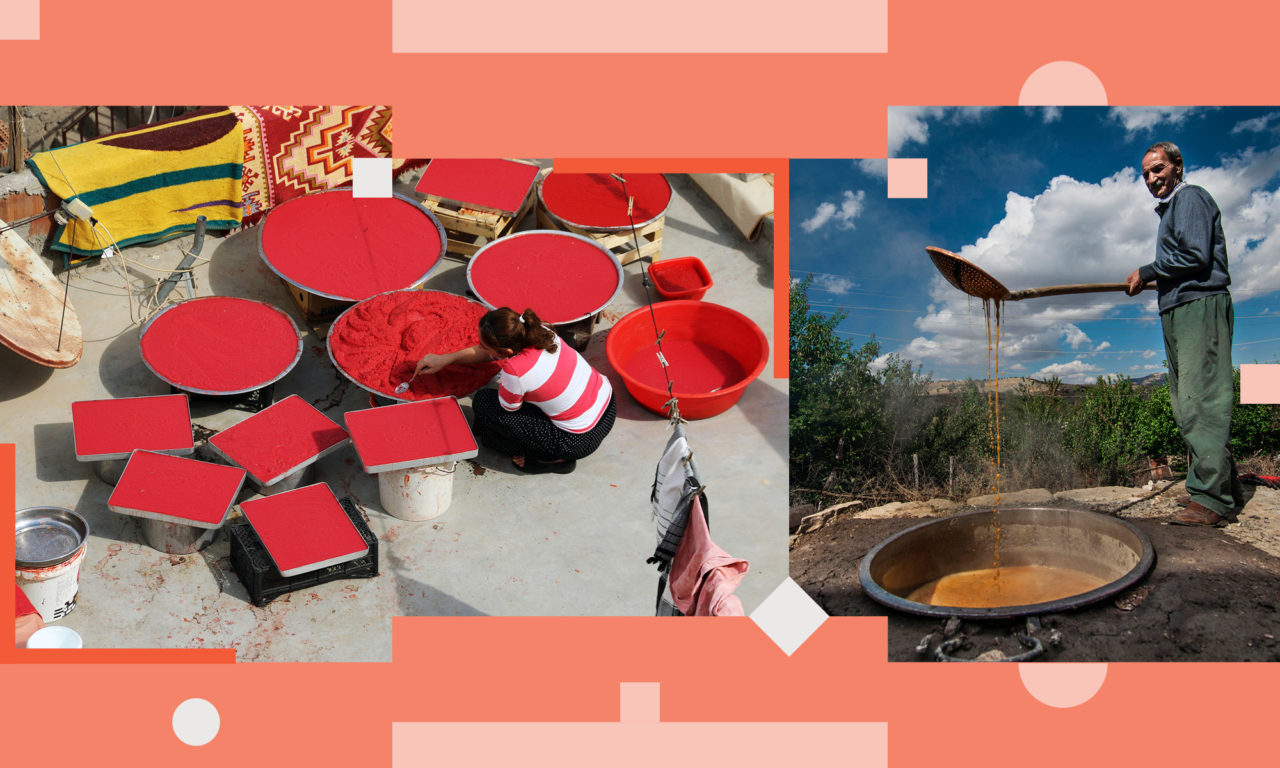
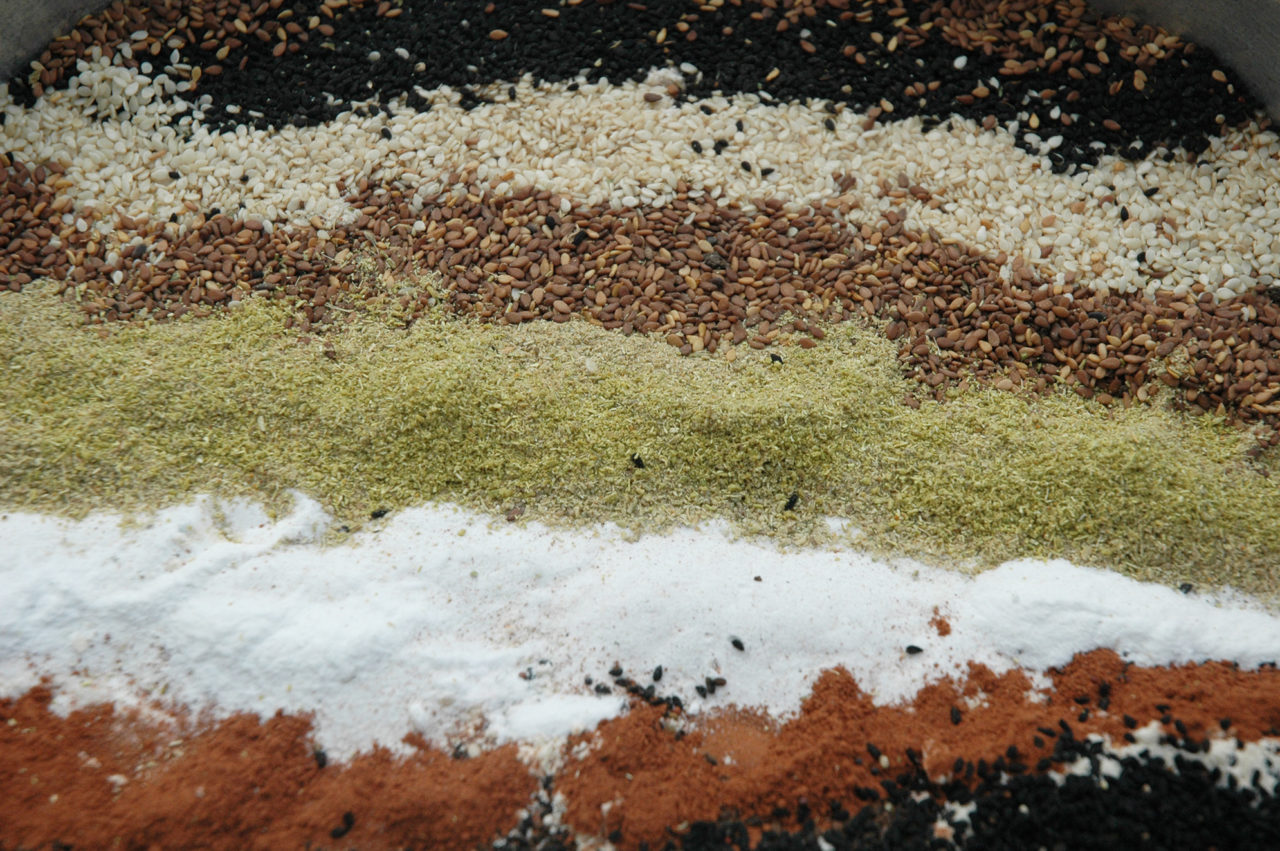
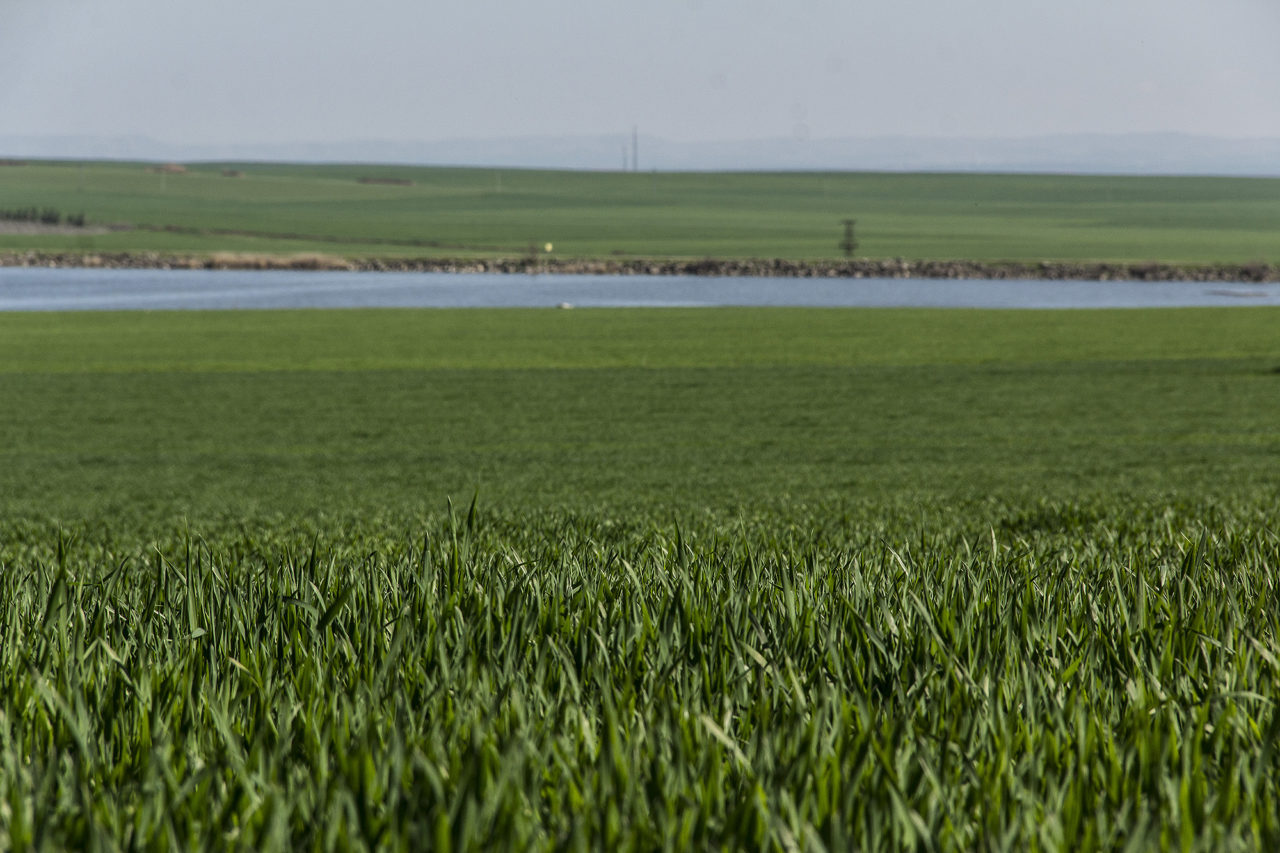



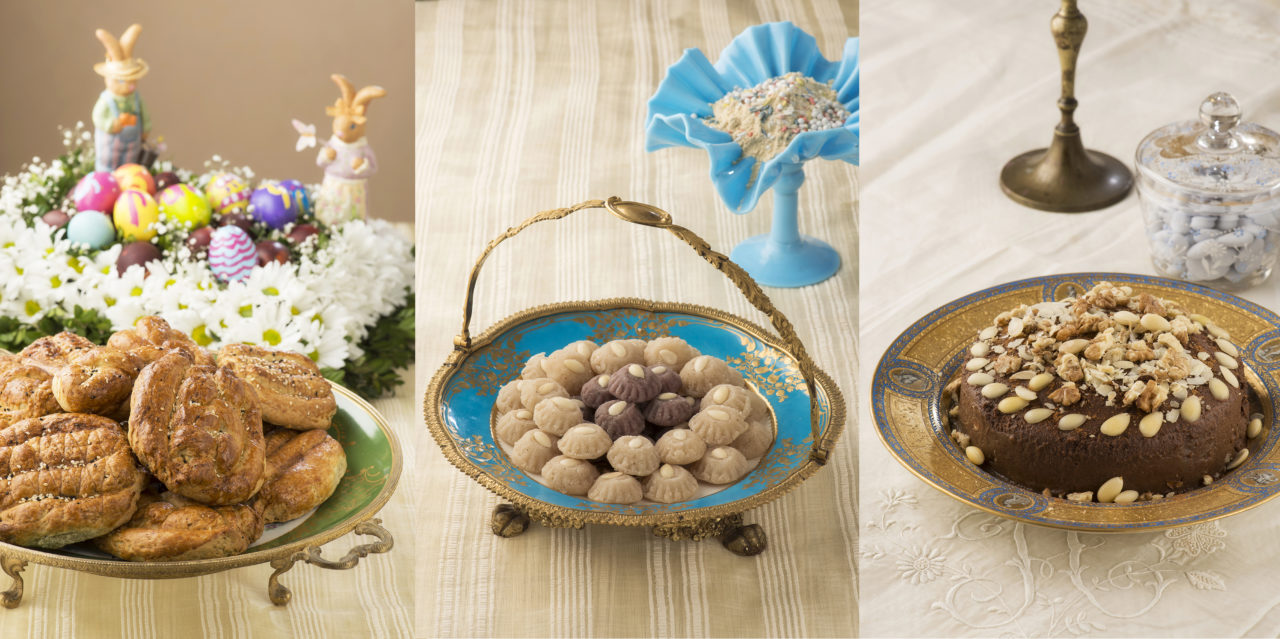
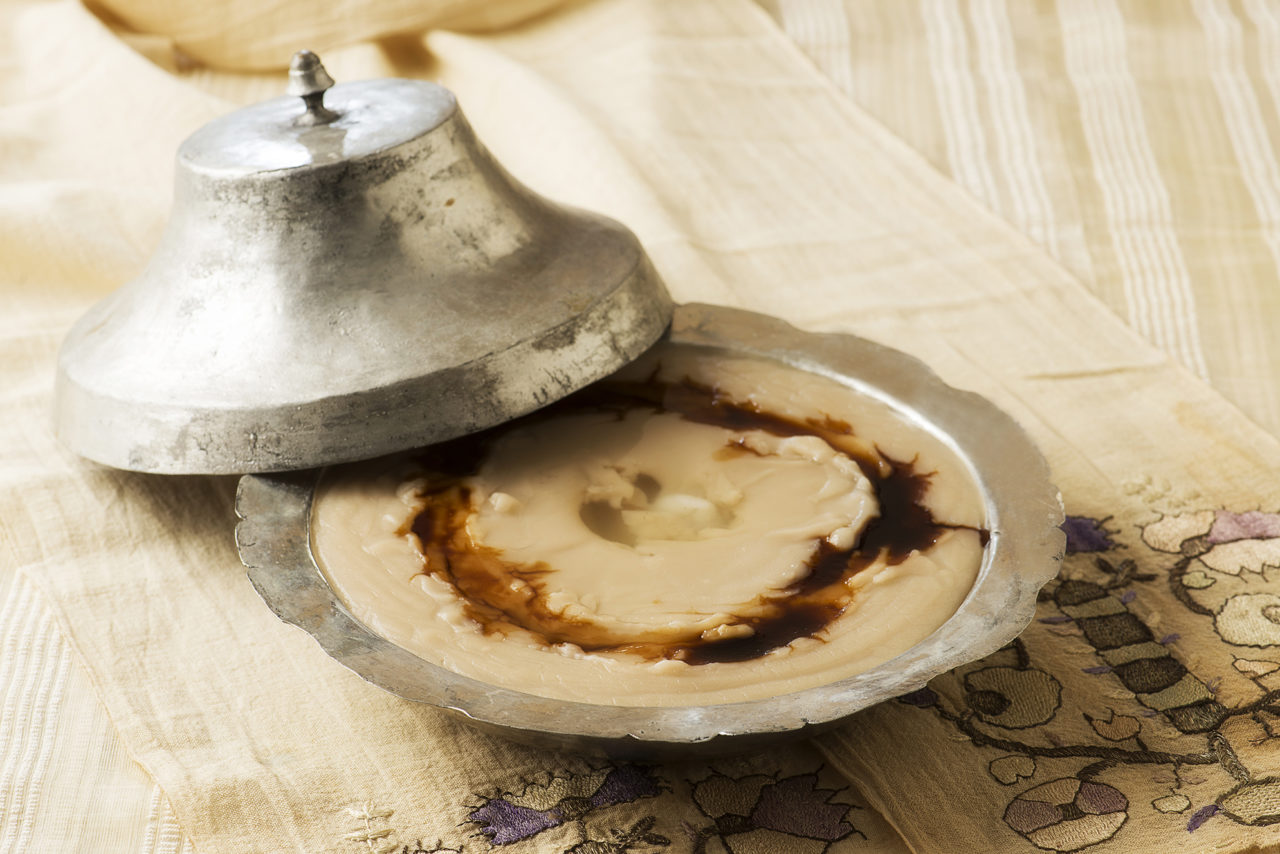
![In traditional Diyarbakır cuisine, copper kitchen utensils held special significance. Various cookware and bakeware of different sizes were the product of fine artisanship where Armenian master artisans stood out. The bucket in the photograph is used to ferment yoghurt, while the other utensil is a serpuşlu sahan [literally, a pan with a hat] including a lid to cover the food.](https://diyarbakirhafizasi.org/wp-content/uploads/2020/07/9_Mutfak_TOTAL-1280x504.jpg)

